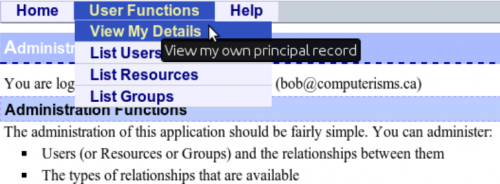Shared Address Book: Difference between revisions
Jump to navigation
Jump to search
| Line 25: | Line 25: | ||
|[[File:Help.davical.select.book.principal.png|center|500px]] | |[[File:Help.davical.select.book.principal.png|center|500px]] | ||
|- | |- | ||
|[[File:Help.davical.dav.path.png|center|500px]] | |[[File:Help.davical.book.dav.path.png|center|500px]] | ||
| | | | ||
*Near the top of the page, take note of the value for DAV Path | *Near the top of the page, take note of the value for DAV Path | ||
Revision as of 02:27, 1 August 2012
- Setting up Shared Address Books is a two part process
- First, you must log into the server interface to create the address books and grant permission to other user to access them
- The act of logging in will create a default calendar and address book for that user.
- It is required that a user log in before he can be granted permissions to any address books
- Then you need to configure your CardDAV client to access the address books you created
- There is no web interface for the address books, you must access them through a client such as thunderbird or webmail.
- This interface is a little bit overwhelming at first, but so is the number of things you can do with it
- This page will not show you everything you can do, but it should show you some of the basic functions without making you learn all there is to know.
I Just Want an Address Book That All My Devices Will Sync With
|
 |
 |
*Ignore the contents of this page for now, at the top of the page, put your mouse on UserFunctions and then select "View My Details" |
|
 |
 |
|
|
 |